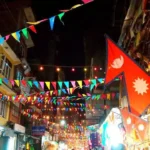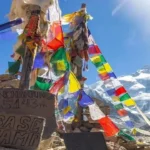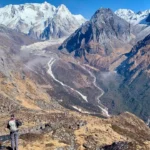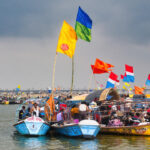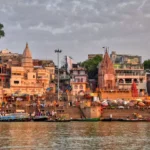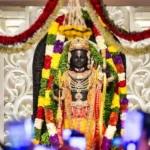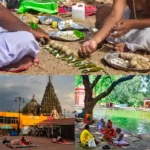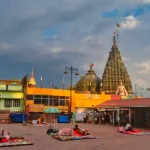Understanding the Guardians of the Valley: Who are the Newars?
The Newars are an ethnolinguistic group who constitute the historical inhabitants of the Kathmandu Valley. Their history in the valley stretches back millennia, though their golden age is often associated with the Malla period (12th-18th centuries). During this era, the independent Newari kingdoms of Kathmandu, Patan, and Bhaktapur flourished, fostering an environment ripe for artistic, cultural, and architectural innovation.
Known for their sophisticated urban civilisation, the Newars developed complex social structures, a unique language (Nepal Bhasa or Newari), a syncretic blend of Hinduism and Buddhism, and unparalleled skills in various arts and crafts, most notably Newari wood carving, metalwork, and bricklaying.
Their society was traditionally organised around the Guthi system, a community-based social institution crucial not only for celebrating festivals and managing social affairs but also significantly for the maintenance and preservation of public buildings, temples, and traditional infrastructure. This system underscores the collective responsibility inherent in traditional Newari culture for safeguarding their shared heritage.
The Newars transformed the Kathmandu Valley into a hub of culture and commerce, attracting scholars, traders, and pilgrims. The wealth generated from trade, combined with a deep devotion to their faiths, fueled the construction of the stunning architectural marvels that continue to awe visitors today, solidifying the valley’s status as a UNESCO World Heritage Site.
The Tapestry of Belief and Celebration: Key Aspects of Newari Culture
Newari culture is a vibrant, living entity, deeply intertwined with spirituality, community life, and a calendar packed with festivals. This cultural richness is not confined to rituals and celebrations; it permeates their art, music, cuisine, and, critically, their architectural expressions.
- A Syncretic Spiritual Landscape: One of the most fascinating aspects of traditional Newari culture is the seamless blend of Hinduism and Buddhism. These two major religions have coexisted and influenced each other for centuries in the valley, often sharing deities, festivals, and sacred spaces. It is common to find Hindu and Buddhist shrines side-by-side, or even hybrid deities worshipped by followers of both faiths.
This syncretism is visually evident in Newari architecture, where stupas might incorporate Hindu motifs or where temple courtyards house shrines dedicated to multiple deities from both pantheons. Major deities like Shiva, Vishnu, Durga, and Ganesh are venerated alongside Buddhist figures such as the Dhyani Buddhas, Bodhisattvas (like Avalokiteshvara), and various manifestations of compassion and wisdom. The Living Goddess, Kumari, worshipped by both Hindus and Buddhists, is another powerful symbol of this unique syncretism.
- A Calendar of Vibrant Festivals: Newari life is punctuated by a multitude of vibrant festivals, or Jatras, many of which are intrinsically linked to the urban space and its architecture. These celebrations are not merely religious events but social gatherings that reinforce community bonds and cultural identity.

- Indra Jatra: One of the most significant festivals, Indra Jatra, involves the pulling of chariots of Ganesh, Bhairav, and the Living Goddess Kumari through specific routes in the old city. The festival culminates in Kathmandu Durbar Square, highlighting the central role of these architectural spaces in public life and religious ceremony. The elaborate chariots themselves are magnificent examples of traditional craftsmanship.
- Machhindranath Jatra: Particularly prominent in Patan and Bungamati, this festival involves pulling the towering chariot of Rato Machhindranath, the god of rain and harvest. The lengthy procession, which can last for weeks, dictates the flow and use of the city’s streets and squares.
- Gai Jatra (Cow Festival): A festival commemorating the dead, involving processions through the streets with participants often dressed in elaborate costumes. It’s a mix of remembrance, humour, and social commentary, again utilising the urban architectural layout.
- Other important festivals include significant Buddhist events tied to stupas and monasteries (Bahals), and Hindu celebrations like Dashain and Tihar (Deepawali), which, while national festivals, have distinct Newari flavours in their observance within homes and public spaces.
These festivals demonstrate how traditional Newari culture activates and interacts with its built environment. The open squares become stages, the streets become processional paths, and the temples and patis (rest houses) provide focal points and gathering spaces.
- The Guthi System: Guardians of Heritage: Mentioned earlier, the Guthi system is a pivotal social institution. These are typically hereditary trusts or community groups responsible for specific tasks, ranging from organising festivals, performing rituals, and managing land, to crucially, the upkeep and repair of temples, rest houses, and other public or religious structures.
The Guthi system played a vital role in the historical maintenance of Newari architecture, ensuring that these valuable buildings were cared for across generations, funded by community contributions or dedicated land endowments. While facing modern challenges, the spirit of the Guthi continues to be important in contemporary preservation efforts.
- Arts and Crafts: The Soul of Decoration: Newari artisans are renowned for their exceptional skills. Newari wood carving, metalwork, stone sculpture, pottery, and painting (particularly Pau Bhakti, traditional scroll painting) are not merely decorative arts; they are integral expressions of their spirituality and worldview.
These art forms are inseparable from Newari architecture. Every temple strut, every window frame, every door, and every courtyard shrine is a potential canvas for intricate artwork that tells stories from epics, depicts deities, or incorporates auspicious symbols. This deep connection means that to appreciate Newari architecture fully, one must also appreciate the mastery of the craftsmen who created its stunning details.
- Language and Literature (Nepal Bhasa): The Newari language, Nepal Bhasa, has a rich literary tradition. Historically, many religious texts, chronicles, and dramas were written in Nepal Bhasa. While not as directly visible as architecture, the language carries the nuances of Newari thought, history, and culture, informing the symbolism and narratives depicted in their art and buildings.
Architecture as a Manifestation of Culture: The Newari Style
The traditional Newari architecture of the Kathmandu Valley is instantly recognisable and deeply admired. It is characterised by a unique blend of indigenous techniques, religious symbolism, and artistic flair. More than just shelters or places of worship, these structures are physical embodiments of traditional Newari culture, social organisation, and spiritual beliefs.
Key Characteristics of Traditional Newari Architecture:
- The Iconic Pagoda Style: Perhaps the most celebrated feature of Newari architecture is the multi-tiered pagoda roof structure, particularly evident in temples. While the origin of the pagoda style is debated (some theories link it to ancient Nepal and its spread to East Asia), the Newars perfected it in timber and tile. These temples typically feature a square or rectangular base, with roofs stacking upwards, each layer smaller than the one below.
The roofs are usually covered in terracotta tiles (Jhingati) and supported by intricately carved wooden struts depicting deities or mythical creatures. The tiered roofs are often adorned with gilded metalwork, prayer flags, and culminate in a gajur, a spire-like pinnacle often topped with an umbrella-like chatra, symbolising enlightenment or sovereignty. Famous examples include the Nyatapola Temple in Bhaktapur, the Taleju Temple complex in the Durbar Squares, and the historical Kasthamandap (sadly destroyed in the 2015 earthquake but being rebuilt).
- Intricate Woodcarvings (The Soul of the Structure): If brickwork forms the body of Newari architecture, woodcarving is its soul. Every piece of timber seems to come alive under the Newari craftsman’s touch. Doors, windows, roof struts, tympanums (toranas above doorways or niches), and pillars are lavishly decorated. Motifs include:
Deities: Representations of Hindu and Buddhist gods and goddesses.
Mythical Creatures: Lions, elephants, makaras (sea creatures), and various protective spirits.
Auspicious Symbols: Mandalas, lotus flowers, Kalachakra symbols.
Narrative Scenes: Episodes from epics like the Ramayana or Mahabharata, or Jataka tales from Buddhism.
Geometric and Floral Patterns: Adding layers of visual richness.

The Newari window carving, in particular, is legendary. Different windows exist, from simple grilled ones to the exquisitely complex ‘Desay Madu Jhya’ (the Peacock Window) in Bhaktapur, famous for its intricate design. These windows are not just functional; they are public art, allowing glimpses out while also presenting beauty to the street.
- Exposed Red Brickwork: Traditional Newari architecture extensively uses small, red, kiln-fired bricks, often left exposed or joined with a mud mortar. The brickwork itself can be decorative, laid in intricate patterns or featuring carved clay tiles integrated into the walls. The warm, earthy tone of the brick creates a distinctive aesthetic that harmonises with the natural environment.
- The Central Courtyard (Chowk): Traditional Newari houses, as well as monasteries (Bahals), are typically built around a central open courtyard (Chowk). This courtyard serves multiple purposes:
Light and Ventilation: Providing essential natural light and airflow to the inner rooms in densely packed urban areas.
Family Life: A private, secure outdoor space for daily chores, social interaction, and rituals.
Religious Space: Often houses a shrine, well, or sacred tree, serving as the spiritual heart of the home or monastery.
Community: In Bahals or larger residential compounds, the courtyard is a shared space fostering community bonds.
The architecture is often inward-looking, with ornate facades facing the street, but the core of daily life revolves around the private or semi-private courtyard.
Structural Elements and Symbolism: Beyond the decorative aspects, the structural elements also carry symbolic meaning.
Plinths: Many important buildings, especially temples, are raised on multi-tiered plinths, adding grandeur and symbolising their elevated status. These plinths are sometimes carved or feature steps leading upwards, representing a journey towards the sacred.
Roof Struts: These load-bearing timbers supporting the roof eaves are almost always carved with figures of deities, protective spirits, or tantric images, guarding the sacred space and illustrating religious narratives.
Doors and Doorways: Considered thresholds between the profane and the sacred (in temples) or the public and private (in homes), doorways are often elaborately carved with guardian figures (dvarapalas) and auspicious symbols.
Toranas: Carved wooden or metal panels placed above doorways or niches, typically depicting a central deity surrounded by mythological figures or narratives, acting as protective and decorative elements.









